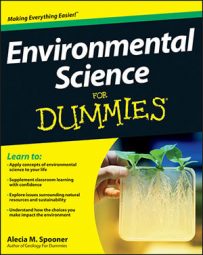Environmental scientists who study biological communities look at the number of organisms, the number of species, and the distribution of the plants and animals across the environments that they inhabit. Two measures that help scientists study communities and observe how they change over time or across their environment are abundance and richness:
Abundance: The total number of organisms in a community
Richness: The number of different species that make up a community
Although these two concepts may seem similar, they measure two different things. For example, an anthill has a high abundance (many individuals) but low richness (only one species). Conversely, a tropical fish tank may have only a few individuals (low abundance), but it may have many different species (high richness).
The ecological structure of a community describes where the organisms are physically located across their environment and in relation to one another. For example, a community’s ecological structure may be random, such as wildflowers scattered across a field. Or it may be clustered, such as a school of fish swimming together through the ocean.
Some communities, such as communities of prairie dogs, even exhibit an orderly or uniform structure in which the individuals spread out at even intervals across the landscape.
Biological communities and the process of succession
Communities of organisms change over time in terms of how they’re structured and what species they contain. In particular, communities shift and change over time in a process called succession. While many types of communities experience change through succession, the concept is most easily illustrated with a plant community. The two types of plant succession are
Primary succession: Pioneer species move into an environment that has no soil or organic matter present. After they have established themselves in their new environment, they begin to cycle nutrients and organic matter, creating soil and providing a healthy base for other (non-pioneer) species to follow.
After enough organic matter is present in the soil to support them, tree seedlings take hold and grow, taking up space and blocking the sun from the smaller plants. The figure illustrates what primary succession looks like over time.
![[Credit: Illustration by Lisa Reed]](https://www.dummies.com/wp-content/uploads/338273.image0.jpg) Credit: Illustration by Lisa Reed
Credit: Illustration by Lisa ReedSecondary succession: This type of succession occurs when soil is present and plants have been growing but are removed (usually by a disturbance of some kind). Similar to primary succession, pioneer species are the first to populate the cleared area, followed quickly by trees and larger plants.
The end point of succession for plant communities, whether it’s primary or secondary, is the climax community, or the mature phase that plant communities reach when they’re left alone to grow and change.
How biological communities respond to disturbances
Of course, no community is left alone for very long! Even without humans or other animals, plant communities often have to deal with unexpected changes, such as floods, fires, and windstorms. These events that disrupt the community are called disturbances.
Disturbances can change the structure of plant communities in several different ways, including knocking down trees or removing plants and animals from large parts of an environment. Although your instinct may tell you to protect communities from such disruptive events, scientists have found that some communities actually prefer to be disturbed every now and then.

